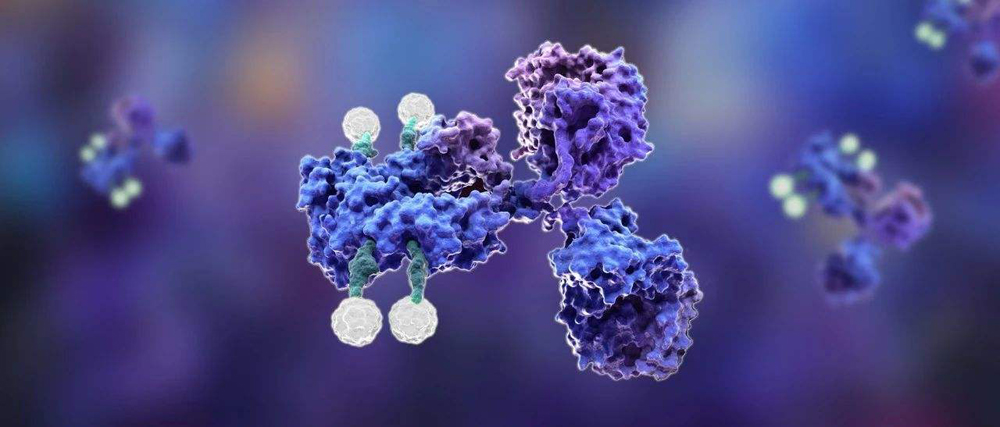At present, common linkers can be mainly divided into two categories according to the cleavage method: chemical cleavage and enzymatic cleavage.
1. Chemical cracking linker
1: Acid cleavage class
This type of linker needs to be stable in the blood transport environment (PH=7.4), enter the acidic environment in the endosome (PH=5.5-6.2) and lysosome (PH=4.5-5.0) in the cell, and be Acid-catalyzed hydrolytic excision.
The hydrazones in Mylotarg are acid hydrolyzed to ketones and hydrazines, which effectively excise the linker fragment and release the drug. Disulfide bonds are also used in this ADC.
Another commonly used structure for acid hydrolysis is carbonate linker.
Simple carbonates have limited stability in serum, requiring the addition of a p-aminobenzyl (PAB) group to significantly increase the half-life.
The carbonate structure is hydrolyzed under acidic conditions to release the SN-38 drug and carbon dioxide.
2: Chemical cleavage of disulfide bonds
Disulfide compounds are stable under physiological pH conditions, but are susceptible to nucleophilic attack by thiols, which sever the link.
In plasma, the main thiol is derived from reduced HSA, but the sulfhydryl groups in these macromolecules are usually buried in the steric structure and have poor reactivity.
The cytoplasm contains a large amount of glutathione (GSH), and the concentration of GSH in cancer cells will be higher. The nucleophilic sulfhydryl group in GSH can cut off disulfide bonds with high efficiency.
2.1 sterically hindered disulfide bonds
The stability of the disulfide bond is easily affected by the α-position substituent, which in turn affects the physiological activity of the ADC.
Maytansinoid-ADCs are ADCs targeting HER2+. The researchers explored the disulfide bond elimination activity when a methyl substituent exists at the α-position of the disulfide bond.
It was found that when the substituents were increased, the disulfide bonds became very inert.
The disulfide bond without a substituent is easy to break, and the disulfide bond with two substituents is difficult to release the drug. In the end, only the single-substituted structure can exert the maximum pharmacological activity (R1=H, R2=Me, DM1).
2.2 Directly linked disulfide bonds of antibody loads
The cysteine on the antibody and the thiol on the Maytansinoid can directly form a disulfide bond without additional linker structure.
Some sites surrounded by antibody macromolecules can ensure the stability and efficient release of the load, and do not need to optimize the steric hindrance of the vicinal substituents.
In addition, the carbamate used on MMAE to link the disulfide bond can also release the load efficiently, and greatly expand the range of small molecule loading that can be used for disulfide bond linkage.
3: Exogenous substances trigger elimination
The ADC drug containing thioether bonds was less potent than Doxorubicin itself when tested in HER2+ cells, but was equally potent in the presence of a [Pd(COD)Cl2] degrading agent.
2. Enzymatic cleavage
There are specific enzymes in both intracellular lysosomes and extracellular tumor microenvironment that can selectively cleave corresponding substrates.
1. Cleavage of dipeptides by cathepsin
Dipeptide linkers usually target cathepsin B, which is mainly found in lysosomes and whose activity is also observed outside the cell.
The structure of these dipeptides requires a hydrophilic residue at P1 and a hydrophobic residue at P2, which can be hydrolyzed by proteases while maintaining the stability of the linker during plasma delivery.
The ADC of doxorubicin requires the addition of a spacer unit, p-aminobenzyl formate (PABC), between the dipeptides. PABC undergoes self-degradation soon after enzymatic cleavage of the dipeptide, releasing the prototype Dox drug.
2. Glycosidase cleavage
β-glucuronidase is a hydrolase in the glycosidase class, which catalyzes the decomposition of β-glucuronic acid residues in polysaccharides.
PABC-containing glucuronic acid units have been studied, and these structures are more stable in plasma than dipeptides and can efficiently release prototype payloads.
The glucuronic acid linker also has the advantage that due to its high hydrophilicity, it can greatly reduce the aggregation of ADCs, which allows the synthesis of high-loaded ADC drugs (DAR=8).
The β-galactosidase cleavable linker is similar to glucuronidase.
3. Phosphatase cleavage
There are acid pyrophosphatase and acid phosphatase in lysosomes, which can hydrolyze phosphate bonds.
Merck designed a diphosphate linker that hydrolyzes in the lysosome to release the prototype glucocorticoid-like load, and when the monophosphate linker was tested, drug release was relatively slow.
Summarize
The vast majority of ADCs currently use disulfides or dipeptides because of their ability to effectively differentiate between plasma and target cell conditions. Both technologies are now mature and are being further developed to better address solubility, plasma stability and the ability to release functional groups.









